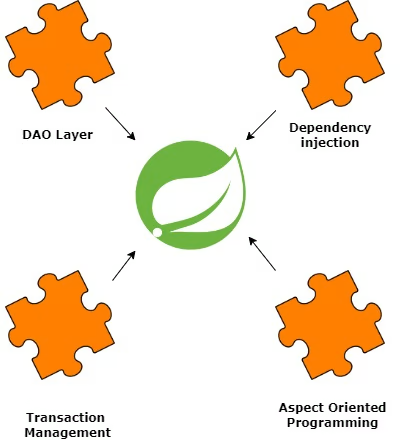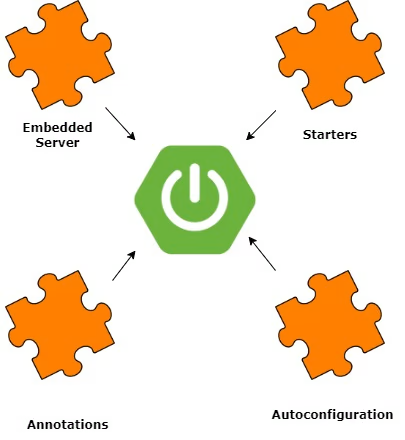Table of Contents
ToggleIntroduction: Spring vs Spring Boot
In the world of Java development, Spring Framework and Spring Boot are two powerful tools that have significantly influenced how developers build applications. While they are closely related, understanding the key differences between them is essential for choosing the right tool for your project. In this article, we will dive deep into the distinctions between Spring and Spring Boot, covering their core concepts, architecture, setup, performance, and more.
History and Evolution
Origins of Spring Framework
Spring Framework was introduced in 2003 as a comprehensive framework to simplify Java enterprise development. It aimed to address the complexities of building large-scale applications by providing a consistent programming model and supporting various integration points.
Emergence of Spring Boot
Spring Boot came into the picture in 2014 as a project built on top of Spring Framework. Its primary goal was to simplify the process of developing Spring applications by offering default configurations, an embedded server, and a more streamlined approach to development.
Core Concepts
What is Spring Framework?
Spring Framework is a modular and flexible framework for building Java applications. It provides a wide range of features, including dependency injection, aspect-oriented programming, transaction management, and support for data access frameworks like Hibernate.
What is Spring Boot?
Spring Boot is an extension of Spring Framework that focuses on simplifying the development process. It offers a set of pre-configured templates and an embedded server to help developers get started quickly. Spring Boot also minimizes the need for extensive configuration, making it easier to build production-ready applications. If you interested in learning more about Spring Boot and its implementation, please read this article.
Architecture
Spring Framework Architecture
Spring Framework is composed of several modules that provide different functionalities. These modules include Core, AOP (Aspect-Oriented Programming), Data Access, Web MVC, and others. Each module can be used independently or together, depending on the project’s requirements.

Spring Boot Architecture
Spring Boot builds on the foundation of Spring Framework but adds an opinionated approach to development. It provides a set of default configurations and dependencies, known as “Starters,” which are designed to cover most use cases. This feature enables the developer to put most of their effort into writing business logic instead of boilerplate code.

Setup and Configuration
Setting Up a Spring Framework Project
Setting up a Spring Framework project typically involves configuring various XML files or Java classes. Developers need to manually define beans, dependencies, and other components, which can be time-consuming for large projects.
Setting Up a Spring Boot Project
Spring Boot simplifies the setup process by providing pre-configured templates and an embedded server. Developers can create a new Spring Boot project using tools like Spring Initializr, which generates a ready-to-use project with minimal configuration.
Dependency Management
How Spring Framework Handles Dependencies
In Spring Framework, dependency management is handled through a combination of XML configuration and annotations. Developers need to manually specify dependencies, which can lead to complex and error-prone configurations.
How Spring Boot Simplifies Dependency Management
Spring Boot addresses these challenges by offering “Starters,” which are pre-configured dependency packages that cover common use cases. This reduces the need for manual dependency management and helps developers get started quickly.
Application Development
Development Experience with Spring Framework
Spring Framework offers a high degree of flexibility, allowing developers to customize various aspects of their applications. However, this flexibility comes at the cost of increased complexity, as developers need to manage multiple configurations and dependencies.
Development Experience with Spring Boot
Spring Boot streamlines the development process by providing a set of opinionated defaults. This reduces the amount of boilerplate code and allows developers to focus on writing business logic. The embedded server and auto-configuration features further simplify the development process.
Configuration
XML-Based Configuration in Spring
Traditionally, Spring Framework relied heavily on XML-based configuration. Developers needed to define beans, dependencies, and other components in XML files, which could become cumbersome as the project grew in size.
Annotation-Based Configuration in Spring Boot
Spring Boot embraces annotation-based configuration, reducing the need for XML files. Annotations like @SpringBootApplication, @Configuration, and @ComponentScan allow developers to configure their applications using concise, readable code.
Embedded Servers
External Servers in Spring Framework
In a traditional Spring Framework project, developers need to deploy their application to an external server, such as Tomcat or Jetty. This adds an extra step to the deployment process and requires additional configuration.
Embedded Servers in Spring Boot
Spring Boot comes with an embedded server, allowing developers to run their applications without needing an external server. This simplifies the development and deployment process, making it easier to create and test applications locally.
Startup and Performance
Performance in Spring Framework
Spring Framework provides robust performance but requires manual tuning and optimization. Developers need to configure various aspects of the application to achieve optimal performance, which can be time-consuming.
Performance Improvements in Spring Boot
Spring Boot offers several performance enhancements, including faster startup times and optimized configurations. The auto-configuration feature helps reduce the time spent on manual optimization, allowing developers to focus on building features.
Microservices
Building Microservices with Spring Framework
Spring Framework provides the necessary tools and libraries to build microservices, but it requires developers to manage configurations and dependencies manually. This can lead to complexity, especially in large-scale microservices architectures.
Building Microservices with Spring Boot
Spring Boot is well-suited for building microservices, thanks to its lightweight, modular approach. The embedded server, auto-configuration, and integration with cloud-native technologies make it easier to develop, deploy, and manage microservices.
Community and Ecosystem
Ecosystem Around Spring Framework
Spring Framework has a vast ecosystem, with numerous modules, libraries, and extensions available. This allows developers to build complex applications with a wide range of functionalities, but it also requires them to navigate a complex landscape of options.
Ecosystem Around Spring Boot
Spring Boot benefits from the same ecosystem as Spring Framework but simplifies the development process by providing pre-configured options. This allows developers to leverage the power of the Spring ecosystem without getting bogged down in complexity.
Use Cases
When to Use Spring Framework
Spring Framework is best for enterprise and large-scale applications that need lots of customization. It is also well-suited for projects where developers need to integrate with various third-party systems and tools.
When to Use Spring Boot
Spring Boot is best for projects where time-to-market is crucial, and developers want to minimize configuration overhead. It is also ideal for building microservices, cloud-native applications, and smaller projects that require rapid development.
Learning Curve
Learning Curve for Spring Framework
Spring Framework can be challenging to learn, particularly for developers who are new to enterprise-level Java development. The extensive configuration options and modular architecture require a deep understanding of the framework to use it effectively.
Learning Curve for Spring Boot
Spring Boot has a gentler learning curve, thanks to its opinionated approach and simplified configuration. Developers can quickly get started with Spring Boot, making it an excellent choice for beginners and those looking to build applications quickly.
Conclusion
Summary of Key Points
Spring Framework and Spring Boot are both powerful tools for Java development, each with its strengths and weaknesses. Spring Framework offers flexibility and a comprehensive ecosystem, making it suitable for large, complex projects. In contrast, Spring Boot simplifies development with its opinionated approach, embedded server, and pre-configured templates, making it ideal for smaller projects, microservices, and rapid development.
Choosing the Right Tool for Your Project
When deciding between Spring and Spring Boot, consider the specific needs of your project. If you need extensive customization and are building a large-scale application, Spring Framework might be the better choice. On the other hand, if you want to get started quickly and focus on building features rather than managing configurations, Spring Boot is likely the way to go.
FAQs
What are the main differences between Spring and Spring Boot?
Spring is a comprehensive framework for building Java applications, while Spring Boot is an extension that simplifies development by providing default configurations and an embedded server.
Can you use Spring Boot without Spring?
No, Spring Boot is based on the Spring Framework and depends on its core features..
Is Spring Boot faster than Spring?
Spring Boot offers faster startup times and optimized configurations, making it more performant out of the box compared to a traditional Spring application.
Which is better for microservices: Spring or Spring Boot?
Spring Boot is generally better suited for microservices due to its lightweight, modular approach and support for cloud-native technologies.
How does Spring Boot simplify application development?
Spring Boot makes development easier by offering pre-configured templates, an embedded server, and annotation-based configuration, which minimizes the need for complex setup and repetitive coding

